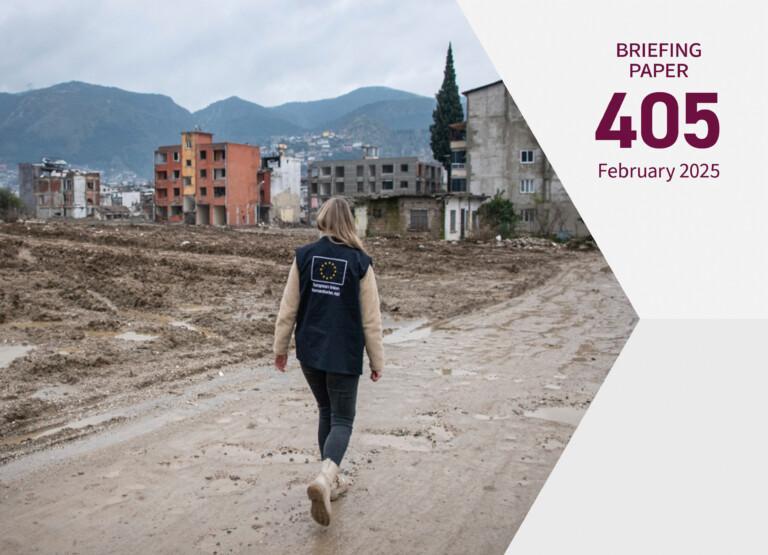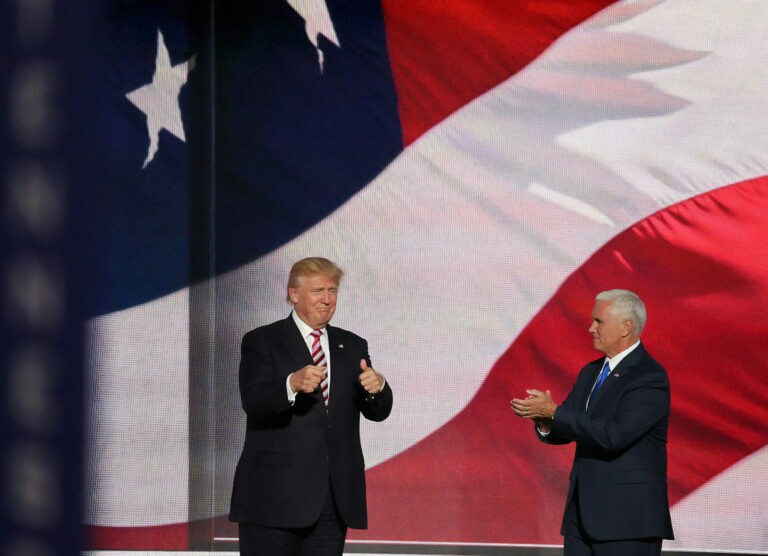
Kiista lentoliikenteen päästöistä: osoitus EU:n heikkenevästä johtajuudesta?
Kansainvälisen lentoliikenteen päästöjen sääntely Kansainvälisen siviili-ilmailujärjestön ICAO:n puitteissa on vasta lastenkengissä, vaikka asiassa otettiinkin lokakuussa 2013 pieniä askelia.
Euroopan unionin on päätettävä ilmailun päästödirektiivistään ilman takeita siitä, että toimivasta globaalista markkinavetoisesta mekanismista sovitaan vuonna 2016.
Monet kolmannet maat, kuten Yhdysvallat, Kiina ja Intia, ovat vastustaneet lentoyhtiöidensä osallistumista EU:n päästökauppaan muun muassa sillä perusteella, että osallistuminen loukkaisi valtioiden suvereniteettia. Maiden kannat liittyvät pikemminkin reaalipoliittiseen peliin kuin varsinaisen päästökauppajärjestelmän yksityiskohtiin.
Euroopan komission muutosesitys pienentää alkuperäisen direktiivin kattavuuden EU:n ilmatilaan. Tätäkin säätelyä vastustetaan laajalti niin kolmansien maiden kuin EU:n jäsenmaiden keskuudessa. Ne poliittiset ja oikeudelliset argumentit, joilla komission muutosesitystä on kritisoitu, eivät kuitenkaan vakuuta.
Myös EU:n jäsenmaiden tulisi pitää kiinni suvereeneista oikeuksistaan, kuten oikeudesta säännellä kansainvälistä lentoliikennettä omassa ilmatilassaan. Vastaisuudessa EU:n tulisi toimia päättäväisemmin, jottei ilmailun päästödirektiivissä perääntymisestä tule ennakkotapausta.
Muuten EU voi joutua alttiiksi painostukselle, kun on kyse muusta sellaisesta sääntelystä, jonka vaikutukset ulottuvat EU:n ulkopuolelle.
Rapidly increasing greenhouse gas emissions from aviation have led to pressure for regulation of the sector’s emissions. In the European Union (EU) alone, aviation emissions increased by 94% between 1990 and 2011, and are expected to rise further. The International Civil Aviation Organisation (ICAO) forecasts that by 2036 global aviation emissions will increase between 155% and 300% compared to 2006 levels. Even though new technologies and management techniques have led to considerable improvements in fuel efficiency, and biofuels hold further potential to reduce emissions, their benefits are outstripped by an ever-growing demand for air travel. The overall contribution of aviation to climate change is therefore expected to increase significantly.
At the international level, early awareness of aviation emissions led to their consideration in the context of the 1992 United Nations Framework Convention on Climate Change (UNFCCC). However, while addressing emissions from domestic aviation proved to be relatively straightforward, allocating responsibility for emissions from international aviation to specific countries presented a difficult dilemma. Parties to the UNFCCC were able to agree on reporting guidelines for emissions from international aviation, but assigning responsibility for them, let alone developing a global mechanism to tackle them, has not been possible. The Kyoto Protocol (1997) notably assigns aviation emissions to ICAO through its Article 2(2): “The Parties included in Annex I [i.e. developed countries] shall pursue limitation or reduction of emissions of greenhouse gases not controlled by the Montreal Protocol from aviation ..., working through [ICAO]...”. Kyoto thus defers the issue to ICAO, the world’s main international organisation in the area of aviation, even though the issue of “international bunker fuels” has also remained on the agenda of the UN climate change regime.
Negotiations in ICAO in the first 10 years after Kyoto moved at a snail’s pace, and initially no regulation seemed to be forthcoming. Aviation emissions have been regularly discussed in different ICAO forums, including the Committee on Aviation Environmental Protection (CAEP) of the ICAO Council, and an ad hoc Group on International Aviation and Climate Change, which developed a programme of action for the ICAO Council. Frustrated with the lack of progress within ICAO, and concerned about the rapidly increasing emissions, the EU opted to include aviation in its emissions trading system (ETS) in 2008. With a few exceptions (e.g. smaller aircraft), the Directive 2008/101/EC (‘Directive’) includes all flights, operated by European or non-European airline, departing from and landing within EU territory within the scope of the ETS, starting in 2012. The sector’s emissions are capped at 97% compared to 2004-2006 levels in 2012, and at 95% from 2013 onwards. Like any other operator covered by the EU ETS, aircraft operators are required to reduce emissions, or to purchase emission allowances at the market price. Initially, the majority of allowances are allocated for free, although some of the allowances (15%) are sold through auctions.
The extension of the EU ETS to aviation can be seen as an act of international leadership, as it was designed in part to incentivise other countries to follow suit, either by developing comparable regimes or by putting a global agreement in place.1 In practice, however, the EU’s move provoked strong negative reactions from other major economies as well as developing countries.
Coalition of the unwilling strikes back
Opposition was brewing from the start of discussions on extending the EU ETS, but became particularly vocal around the time the Directive came into force. The criticisms were varied. A key criticism, shared by almost all opposed countries, is that the Directive constitutes an extrajurisdictional unilateral measure in the sense that it regulates behaviour outside of EU airspace. Opposition against such measures needs to be seen in the context of a long-standing debate in international trade talks, in which developing countries in particular have displayed scepticism towards unilateral trade measures to protect the environment. In addition, developing countries raised serious objections about the lack of differentiation between developed and developing countries regarding the EU measure.
China and Russia kick-started the pushback against the EU in their joint statement in 2011, claiming that the EU move “will have an extremely negative impact on the international aviation industry”, “violates sovereignty of other states” and that “mutual agreement” is needed between all the states concerned.2 In February 2012, a so-called “coalition of the unwilling”, including major economies such as Brazil, China, India, Japan, Mexico, Russia, South Africa and the US, came together in Moscow. The statement produced at the meeting urged the EU to pursue measures for aviation emissions through ICAO. It also listed a series of possible countermeasures, including international dispute settlement in the context of the World Trade Organization or the Chicago Convention, prohibiting airlines from participating in the EU ETS, requiring flight details from EU carriers, imposing countervailing levies or charges on EU operators, renegotiating bilateral air services agreements, and suspending discussions to enhance operating rights for EU airlines.3
Individual countries proceeded to adopt several countermeasures. Notably, the US Congress passed – and President Obama signed – the Thune bill, which could prohibit American companies from complying with the Directive. The bill gives the US administration the political choice to determine whether enforcing it would be in the “public interest”.4 India and China also adopted measures instructing their airlines not to comply with the EU ETS without government pre-approval. In addition, China put an order of 55 planes from Airbus, a major European employer, on hold.5 However, it is worth noting that completing big aircraft deals is a complicated process with a wide range of variables – and fears of a trade war were also fuelled by Airbus themselves. Russia also took measures aimed at the EU, such as denying new flight permits to Finnair, and threatening to do the same for other EU airlines6 – although tensions about Siberian overflights between Member States and Russia predate the ETS conflict significantly. In sum, the backlash was messaged sharply, more often politically than legally, and accompanied by measures targeted at the European aviation sector.
EU on the defensive
Initially, the EU’s reaction to other countries’ criticisms was to dig its heels further in the sand. The European Commission was bolstered in this stance by a ruling of the European Court of Justice (ECJ) in a case brought by several American airlines against the Directive. The Court’s judgment, as well as the opinion by Advocate-General Juliane Kokott that preceded it, offer a number of defences against critiques of the scheme’s illegality.
In the EU’s view – which was supported by the Court – there was already an inbuilt multilateral motivation in the Directive, as the EU agreed to withdraw the package should countries reach agreement on a global market-based mechanism through ICAO. Furthermore, the Directive allows for country exemptions on a bilateral basis if countries introduce their own plans for cutting aviation emissions. This multilateralism-first approach has also been noted by those otherwise critical towards the Directive, such as Lavanya Rajamani, who acknowledges that the EU “has vigorously pursued multilateral options, and chosen this sub-optimal approach only in preference to leaving this rapidly growing industry completely unregulated”.7 Furthermore, the EU argued that the Directive already contains an element of differentiation, as countries with less than 1 per cent of global air traffic – in practice, most small and medium-sized developing countries – are exempted to accommodate the special circumstances of developing countries.
[caption id="attachment_84090" align="alignleft" width="1012"] Figure 1. Revised scope of the EU ETS Directive vis-à-vis emissions from international aviation. Airspace approach, Commission proposal. Source: Europa.eu. Map: Wikimedia Commons.[/caption]
Figure 1. Revised scope of the EU ETS Directive vis-à-vis emissions from international aviation. Airspace approach, Commission proposal. Source: Europa.eu. Map: Wikimedia Commons.[/caption]
In the aviation case before the ECJ, the airlines argued that the Directive violated several rules and principles of international law. In particular, the claimants argued that the Directive is not in line with the principles and the spirit of treaties including the Chicago Convention, the Kyoto Protocol and the Open Skies Agreement. One of the most interesting legal aspects of the Aviation Directive dealt with customary international law, in particular with the notions of sovereignty and extraterritoriality. Contrary to the claimants’ arguments, Advocate-General Kokott concluded that the Directive does not contain any provisions that amounted to exercising extraterritorial jurisdiction. While the calculation of emissions is based on the entire flight – the events that take place over the high seas or on the territory of third countries are taken account of – there is no concrete rule regarding their conduct (e.g. fly certain routes, observe certain speed limits, or comply with certain limits on fuel consumption) outside EU airspace. Kokott further noted that it is by no means unusual for a state exercising its sovereignty to take into account circumstances that occur outside its territorial jurisdiction, drawing on examples from tax law and anti-trust law. In other words, no principles of customary international law were violated.
While the legal arguments were thus rebutted, it became clear that this was insufficient to defuse the political tensions, as the coalition of the unwilling and major airlines continued to put political pressure on the EU in multiple ways. To address this, the EU swiftly adopted the so-called “stop the clock” decision in November 2012, which limited the scope of the Directive to intra-EU flights for one year. Officially, the rationale was to provide a positive signal for the upcoming ICAO talks on a global market-based mechanism in the autumn of 2013. However, it is also clear that several influential EU Member States – France, Germany and the United Kingdom – had become increasingly anxious about the effects of the Directive. France and Germany were concerned about the Airbus orders that China had put on hold, with French President François Hollande raising his serious concerns in a bilateral meeting with European Commission President José Manuel Barroso.8 Similarly, the United Kingdom was concerned about the status of London as a hub for transatlantic air traffic. The Commission had to act quickly, as it became known that President Obama would sign the Thune bill. By making a decision before the bill was adopted, the EU could still somewhat awkwardly claim that their decision was inspired by the ICAO talks, rather than the (looming) countermeasures. Climate Commissioner Connie Hedegaard announced the “stop the clock” decision on 12 November 2012, one day before the US Congress passed the Thune bill. China Eastern Airlines announced an order of 60 Airbus aircraft two weeks later.
Before the ICAO Assembly in September 2013, the EU Commission outlined that it would revise the Directive to cover only European airspace in case the meeting yielded prospects of a global market-based mechanism to be agreed in 2016 and to enter into force by 2020. On paper, the ICAO talks met this requirement by adopting a resolution containing a mandate to start negotiating a market-based mechanism. According to Commissioner Hedegaard, the deal therefore showed that “the EU’s hard work has paid off”.9
However, five developments give little cause for optimism. First, the EU was once again almost alone among the major economies in demanding non-voluntary global regulation. Second, the final document was peppered with different types of reservations. These reservations differ widely in content, and signal remaining disagreements on key provisions of the resolution. Reservations were submitted by important ICAO members, including the United States, China, Brazil, Singapore, the Republic of Korea, the United Arab Emirates, and the EU itself, covering altogether more than 85% of global air transportation. Third, it is worth remembering that in 2001 the Assembly also “endorsed the development of an open emissions trading system for international aviation”,10 and that this did not lead to concrete action. This reinforces the scepticism that many analysts have towards ICAO’s capability to agree on environmental regulation.
Fourth, it became clear that the EU’s airspace proposal was shockingly unpopular, even among small developing countries exempted from the Directive. A passage stating that countries should not include other countries’ airlines in an ETS without a mutual agreement was passed in the 2013 ICAO Assembly with a clear majority (97-39), although the EU’s reservation points out that there is no legal basis for such a requirement in the Chicago Convention. Fifth, China, India and other countries added requirements that ICAO should “consider the mechanism’s feasibility” before adopting it. Developing countries also incorporated controversial language on differentiation, an issue which may well prevent acceptance by the US. In short, the 2013 Assembly marked an unpromising start to the negotiations and offered little hope that ICAO members would agree on a meaningful global market-based mechanism by 2016: “[the ICAO outcome] was just enough to allow the Commission to say that its conditions have been met, but not enough to give anyone confidence that a meaningful deal will indeed be agreed in 2016”.11
In response, the Commission decided to continue pushing for amending the EU ETS Directive with the airspace approach. The proposal boils down to a limitation of the scope of the Directive. For international flights to and from the EU, the Directive would, until 2020, only cover the proportion flown in EU airspace. In other words, under the revised Directive, the EU would only regulate its own airspace (Figure 1). Under the EU’s co-decision procedure, the proposal needs the backing of the European Parliament and the majority of the EU Member States (through the Council). The timeline for this is tight: the Commission has stated its intention to adopt the amendment before the next deadline for surrendering allowances, which is 30 April 2014.
In December 2013 several large and small Member States rejected the Commission’s proposal and suggested that the EU should continue to apply the “stop the clock” decision, meaning that the Directive would continue to apply only to intra-EU flights. The Member States did not seem to have a problem with the EU retreating over the Commission’s airspace proposal, but argued that the EU is not retreating far enough. Member States such as Germany, the United Kingdom, France and Finland backed up their response to the Commission’s proposal by emphasising the importance of the ICAO Assembly resolution and, in so doing, set unrealistically high expectations for the ICAO process.
Long goodbyes to a Directive
The argument from the Member States against the Commission proposal lacks credibility and is circular – the Member States argue that actions by the EU, out of frustration with 15 years of inaction, are now the reason for the deadlock in ICAO and even pose an obstacle to a forthcoming agreement. Legal arguments against the proposal are not convincing either: even more so than the initial Directive, the application of the Commission proposal would be limited to EU airspace. Moreover, trade law concerns should also be mitigated, as the proposal does not discriminate between operators on the basis of where they are located. Data from 2012 showed that the vast majority of airlines from all around the world complied with the Directive (during the “stop the clock” period), proving that technically the EU ETS works, even given the political limitations.12
There are several reasons for the hard talk and uncompromising positions of China, India, the United States and others in relation to the EU ETS that help to explain the big politics over a rather small payment – an extra one or two euros per passenger per overseas flight – which the application of the Directive would entail. First, the aggressive response seems to be inspired by the need to avoid setting an important precedent, in which the EU uses its economic zone, the biggest in the world, to advance global environmental regulation. Such a precedent could conceivably lead to the EU experimenting with climate-motivated border adjustment measures. The more ambitious the EU’s climate policies, the more the pressure will increase to adopt such measures to counter carbon leakage and safeguard the competitiveness of the EU’s trade-exposed industries. Second, the EU initiative treats aviation as a global sector, in which the companies of developed countries and large developing countries are treated equally. This could be seen, from the perspective of large developing countries, as a trial balloon for forthcoming actions in other sectors, such as shipping. Third, the positions by these countries can be explained by the EU’s reputation as an actor that crumbles under international pressure. In multilateral negotiations, other parties have expected the EU to become disunited and back down as the stakes get higher.13 Although the case of aviation is in many ways unique, the EU’s external credibility may well be compromised as the EU retreats in the face of coordinated pressure.
The response measures by these countries clearly illustrate that the aviation game is played in a realist spirit of geopolitics. Neither the Member States nor the Commission should think that the technical or legal details of proposals, or one-sided concessions, will yield significant progress in ICAO negotiations or bilaterally.
The EU is now ready to put all its eggs in the ICAO basket, and to give up a sizeable part of its aviation measures. The original Directive aimed to cap 210 million tons of carbon dioxide, whereas the “stop the clock” version only covers 84 million tons.14 Given that there seems to be no real change in the political mobilisation of ICAO, together with the unconvincing history of the organisation when it comes to environmental matters, there is sufficient reason to be sceptical that ICAO can deliver. The EU’s retreat is only being rewarded with a vague mandate to start fragile negotiations on a global scheme.
Leaving the rapidly growing aviation sector outside all meaningful international climate regulation is a high risk in the current ICAO-based strategy. Suggestions that the Commission’s airspace proposal was unworkable are incorrect; it faces no significant legal implementation hurdles. However, while we want to underscore the rationale to defend the EU’s actions legally and in light of the rapid growth of aviation emissions, questions remain concerning the political implications of the EU scheme. Even so, we believe that the EU should insist on the airspace approach as suggested by the Commission.
The concerns over bilateral relations with the US, China and Russia are real, and countermeasures could certainly hurt EU Member States. The other side of the story concerns EU’s credibility as an international actor. The EU is giving up on a significant part of the application of a Directive, agreed through a co-decision procedure that required the majority of Member States and approval from the European Parliament. This raises the principled question: To what extent should the pressure from third countries influence the existing legislation of the EU? Arguably, backing down in the aviation case could open Pandora’s Box, and affect the credibility of other EU proposals and existing legislation. Other major economies will wonder whether they can test the resolve of the EU in other political contexts. The precedential nature of the aviation case with respect to the EU’s international credibility means that the matter will not simply disappear, even if, as it seems, the EU gives up the major part of the coverage of its legislation.
How to prevent the aviation retreat from becoming a precedent? This question should be duly considered by the European institutions, as well as Member States, during and after the ongoing European Parliament discussions as well as the forthcoming Council meetings on the Commission’s proposal. Europe should, in the future, be more assertive – and at the very least insist on its own sovereign rights, such as the right to regulate aviation in its own airspace.
Endnotes
1 See e.g. Bogojević, Sanja (2012): ‘Legalising Environmental Leadership: A Comment on the CJEU’s Ruling in C-366/10 on the Inclusion of Aviation in the EU Emissions Trading Scheme’. Journal of Environmental Law 24(2): 345-356.
2 Joint Statement between the Civil Aviation Administration of the People’s Republic of China and the Ministry of Transport of the Russian Federation on European Union’s inclusion of aviation into European Union Emission Trading Scheme. 27 September 2011. Available at: http://www.greenaironline.com/photos/China_-_Russia_Joint_Statement_on_EU_ETS__EN_.pdf. Date accessed: 27.2.2014.
3 Joint Declaration of the Moscow Meeting on Inclusion of International Civil Aviation in the EU ETS. 22 February 2012. Available at: http://www.ruaviation.com/docs/1/2012/2/22/50/. Date accessed: 27.2.2014.
4 S. 1956 (112th), European Union Emissions Trading Scheme Prohibition Act of 2011, Section 2(a).
5 Reuters (2012): China Halts 10 More Airbus Orders in EU Row: Sources. Reuters 15 March 2012. Available at: http://www.reuters.com/article/2012/03/15/us-china-europe-ets-idUSBRE82E0P820120315. Date accessed: 27.2.2014.
6 AIN Online (2012): Russia Escalates European Union Emissions Trading Row. AIN Online 18 June 2012. Available at: http://www.ainonline.com/aviation-news/ain-air-transport-perspective/2012-06-18/russia-escalates-european-union-emissions-trading-row. Date accessed: 27.2.2014.
7 Lavanya Rajamani (2011): ‘European Union, Climate Action Hero?’ Indian Express 3 August 2011. Available at: http://www.indianexpress.com/news/european-union-climate-action-hero/826290/0 . Date accessed: 27.2.2014.
8 Lewis, Barbara and Volcovici, Valerie (2012): Insight: U.S., China Turned EU Powers against Airline Pollution Law. Reuters 10 December 2012. Available at: http://www.reuters.com/article/2012/12/10/us-eu-airlines-climate-idUSBRE8B801H20121210. Date accessed: 27.2.2014.
9 European Commission (2013): The Commission Welcomes Agreement on Global Aviation Emissions Deal. 4 October 2013. Available at: http://europa.eu/rapid/press-release_IP-13-918_en.htm. Date accessed: 27.2.2014.
10 See ICAO: Market-Based Measures. Available at: http://legacy.icao.int/icao/en/env2010/MarketBasedMeasures.htm. Date accessed: 27.2.2014.
11 Dave Keating (2013): ‘ETS Grounded’. European Voice 10 October 2013. Available at: http://www.europeanvoice.com/article/imported/ets-grounded/78382.aspx. Date accessed: 27.2.2013.
12 “Aviation and the EU ETS: What happened in 2012 during ‘Stop the Clock?’” Sandbag report December 2013. Available at: http://www.sandbag.org.uk/site_media/uploads/Sandbag_Aviation_and_the_EU_ETS_2012_171213.pdf Date accessed: 27.2.2014.
13 See e.g. Friedman, Lisa (2012): “Europe’s Hedegaard is ‘sure’ the E.U. will not back down in airlines dispute”. ClimateWire 8 February 2012. Available at: http://www.eenews.net/stories/1059959608. Date accessed: 27.2.2014.
14 “Aviation and the EU ETS: What happened in 2012 during ‘Stop the Clock?’” Sandbag report December 2013.









